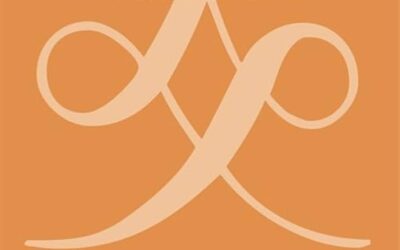
Psychology Tips for Writers: Crafting Psychologically Consistent Characters
Introduction: The Art of Character Development
Creating characters that resonate with readers is a crucial aspect of storytelling. This article explores how insights from therapy can help writers overcome writer’s block and develop nuanced, psychologically consistent characters with depth and complexity.
The Influence of Childhood Experiences
Shaping the Character’s Core
Childhood experiences play a significant role in shaping a character’s psychological makeup. Consider:
- The impact of early interactions with parents and environment
- How the opposite-sex parent influences concepts of lovability, purpose, and creativity
- The role of the same-sex parent in shaping coping strategies
Incorporating Backstory
When developing a character’s backstory, explore:
- Experiences of neglect or unconditional love
- How early influences contribute to the character’s sense of self-worth
- The impact on the character’s ability to form relationships
Exploring Different Parts of the Self
Understanding Personality Parts
Characters, like real people, possess different aspects that influence their thoughts, emotions, and behaviors. Key personality parts include:
- The Inner Critic
- Manifests as self-critical thoughts and self-doubt
- Can drive characters to seek validation or avoid risks
- The Pusher Self
- Compels characters to keep moving forward
- May lead to workaholic tendencies or addictive behaviors
- The Wounded Child
- Represents unresolved childhood trauma or needs
- Can influence adult behavior and relationships
- The Authentic Self
- The core of the character’s true nature
- Often hidden beneath layers of protective behaviors
Creating Internal Conflict
By incorporating these personality parts, writers can:
- Develop rich inner lives for their characters
- Create compelling internal conflicts
- Show character growth through the integration of different parts
The Role of the Shadow
Jungian Psychology in Character Development
The concept of the shadow, from Jungian psychology, refers to repressed aspects of the self. In character development:
- Explore hidden desires, fears, or traumas
- Use shadow aspects to drive character actions and create conflict
- Show character growth through the integration of shadow elements
Crafting Character Arcs
The shadow provides a structure for character arcs:
- Characters confront and integrate their shadow aspects
- This process leads to self-discovery and transformation
- Results in more authentic and evolved characters
Aligning Actions, Thoughts, and Dialogue
Ensuring Psychological Consistency
To create believable characters:
- Align actions with the character’s motivations, fears, and desires
- Craft thoughts and inner monologue that reflect internal struggles
- Develop dialogue that reveals the character’s psychological makeup
Tips for Authentic Character Behavior
- Consider how past experiences influence present choices
- Show internal conflicts through contradictory thoughts or actions
- Use dialogue to reveal coping mechanisms and relationship dynamics
Mapping Characters’ Psychology
Creating Detailed Character Profiles
Develop comprehensive character profiles that include:
- Backstory and childhood influences
- Personality parts and their interactions
- Shadow aspects and internal conflicts
Overcoming Writer’s Block
Use character mapping to:
- Make informed decisions about character behavior
- Ensure consistency in character actions and reactions
- Navigate complex plot decisions
Conclusion: The Power of Psychological Consistency
By incorporating these psychological insights, writers can:
- Create characters with depth, complexity, and authenticity
- Develop compelling character arcs and internal conflicts
- Craft stories that resonate deeply with readers
Remember, the goal is to create characters that feel alive and independent, with their own desires, fears, and narratives. By delving into the psychological depths of their characters, writers can craft stories that captivate readers and leave a lasting impact.
Bibliography:
- Jung, C. G. (1959). The Archetypes and the Collective Unconscious. Princeton University Press.
- Maslow, A. H. (1954). Motivation and Personality. Harper & Row.
- Rogers, C. R. (1961). On Becoming a Person: A Therapist’s View of Psychotherapy. Houghton Mifflin.
- Campbell, J. (1949). The Hero with a Thousand Faces. Pantheon Books.
- Vogler, C. (2007). The Writer’s Journey: Mythic Structure for Writers. Michael Wiese Productions.
References:
- Adler, A. (1927). Understanding Human Nature. Greenberg.
- Berne, E. (1964). Games People Play: The Psychology of Human Relationships. Grove Press.
- Freud, S. (1923). The Ego and the Id. W. W. Norton & Company.
- Jung, C. G. (1968). Man and His Symbols. Dell Publishing.
- Miller, A. (1979). The Drama of the Gifted Child. Basic Books.
- McKee, R. (1997). Story: Substance, Structure, Style, and the Principles of Screenwriting. ReganBooks.
- Truby, J. (2007). The Anatomy of Story: 22 Steps to Becoming a Master Storyteller. Faber & Faber.
- Vogler, C. (1998). The Writer’s Journey: Mythic Structure for Storytellers and Screenwriters. Michael Wiese Productions.
- King, S. (2000). On Writing: A Memoir of the Craft. Scribner.
- Lamott, A. (1994). Bird by Bird: Some Instructions on Writing and Life. Anchor Books.
How the Shadow Shows up in Dreams
























0 Comments